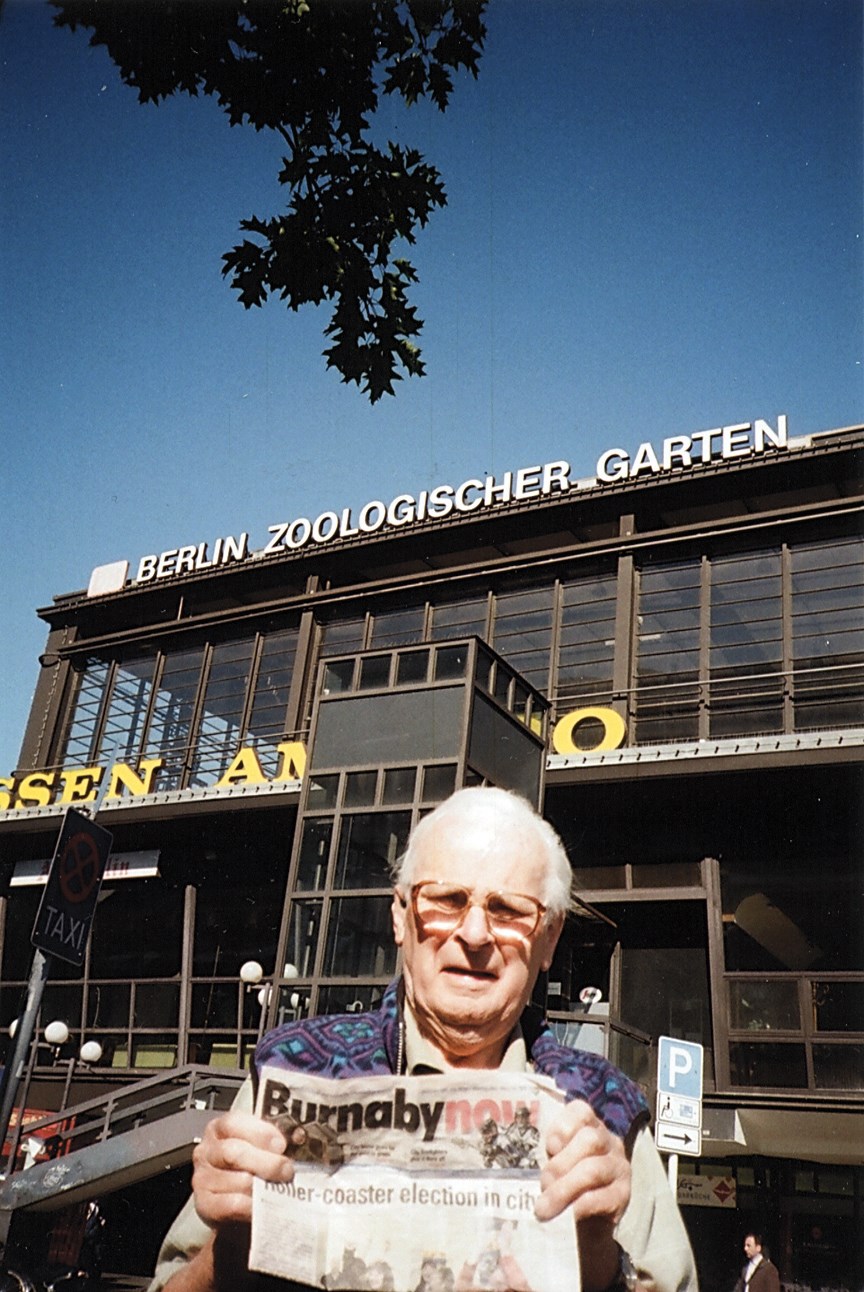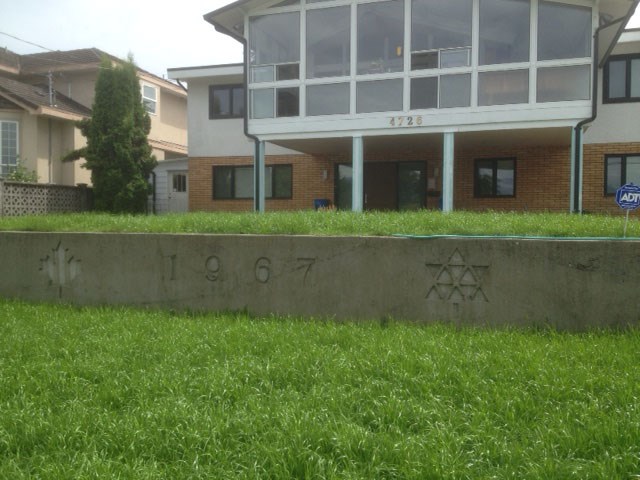A cement retaining wall sits proudly in front of a home north of Metrotown. It’s not tall but it stands tall. It displays a maple leaf on the left, in the middle is ‘1967,’ and on the right is a stylized symbol that’s a mystery to most millennials.
“The strange thing about the centennial symbol is the kids think it’s the Jewish star,” says John Chepil, who lives across the street from the wall.
As most Canadians born before 1967 know, it is the logo Canada adopted during the celebration of its 100-year anniversary. How it came to be etched on a wall on Buxton Street is a love story. A love of country and community. And a personal one, too.

The home was built by Ernest Eckerlin in 1965, and he erected the wall two years later to honour his adopted country.
His next door neighbour, Antonio Candido, says Eckerlin grew up in the Black Forest region of southwestern Germany. Although he was only 18 when the Second World War ended, the Nazis conscripted Eckerlin as a teenager. “He had no choice, you either go or they shoot you, it was that type of scenario,” says Candido.
According to Candido, while serving in the German forces, Eckerlin met Heinz Schoenfelder, who became his lifelong partner. Early in their service, they were captured by the Allied forces and sent to a camp in England where they worked on a farm.
When Canada opened up immigration, Eckerlin and Schoenfelder took advantage and came over in 1955, about the same time Candido’s father arrived from Portugal.
“He referred to Heinz as his cousin,” says Chepil, but there was no doubt they were a couple.
“They were together right through the whole escapade coming from Canada,” says Candido, who adds when the pair arrived in this country they worked for the Canadian National Railway as bakers along with doing other jobs.
They settled in Burnaby with Schoenfelder, who died in 2005, working as a chef at the Blue Boy Motor Hotel in South Vancouver while Eckerlin established his own construction company. (Chepil says Eckerlin built a complete subdivision in Port Moody.)
The sentiment of the wall came from Eckerlin’s heart.
“It’s true freedom, this country, and he realized that. And he wanted to show that,” says Candido. “He was grateful to be in a country where you could be yourself.”
“He used to put a flag out for Canada Day,” says David Little, who was born on the property next door to Chepil in 1947 and helped Eckerlin’s brick layer when the house was built. “He was a very, very nice man. He was very friendly to me when I was growing up.”
Nice is an adjective that flows freely from the lips of neighbours when describing Eckerlin, who died on Oct. 30, 2013, just four days shy of his 87th birthday.
“He was such a nice man,” says Linda Zimmerman, who along with her husband Paul bought the house after his death because Paul’s father Lloyd lived kitty corner to the home and was a good friend of Eckerlin’s. “We just like (the centennial wall). We tried to keep whatever memories that we can (of Eckerlin).”

Says Little, “I was very happy they retained it. Both men enjoyed that house.”
Candido didn’t arrive on Buxton until 1996 when he built a house next door.
“He always made the effort to make friends with everyone he came in contact with,” says Candido. “That’s how we became good friends. If you were willing, he was willing. He would make the extra effort to get you to be his friend, no matter what situation, whether he agreed with you or not, he would always make that attempt.
“He used to tell the stories about when he was young. I enjoyed that. He was that type of person he was, he made the extra effort because if you wanted to reciprocate he would be your friend.”
When Candido, who was a union shop steward at B.C. Tel, worked on his garden on a hot day, Eckerlin, a gardner himself, would show up at about 2 p.m., with a couple of beers in hand declaring, “Coffee break. Union rules.”
In the winter, when the snow hit, Candido, Chepil and Eckerlin would grab shovels and start at one end of the street and work their way around the block. They’d get to some houses and Candido would say, “We’re not going to do that one are we?”
“Yes we are,” Eckerlin would reply
“Why? We don’t like them.”
“Doesn’t matter if we like them or not,” Eckerlin would say and keep shovelling.
And after they were done, “The snowplow would come by and out we’d go again,” says Candido. “He was always on the go, even to his last.”
In the years before Eckerlin’s passing, he had mobility issues, so Candido would do the shopping for him. “(Eckerlin’s death) was hard on me because I really became close that way.”
Candido, 63, keeps Eckerlin close by. They had spare keys to each other’s home to look after them when either was away. After Eckerlin’s death, the keys were returned tagged ‘Toni.’
“That’s the way he always
my name,” sighs Candido, who takes the keys with him when he goes swimming at Bonsor Pool.
When Canada celebrates its sesquicentennial on July 1 it will be Eckerlin and the centennial symbol Candido will remember.
“Some days I sit here in my backyard and I can sort of still see him hanging over the wall talking to me.”



